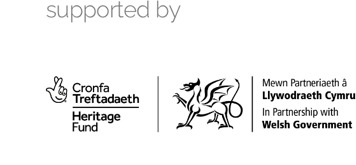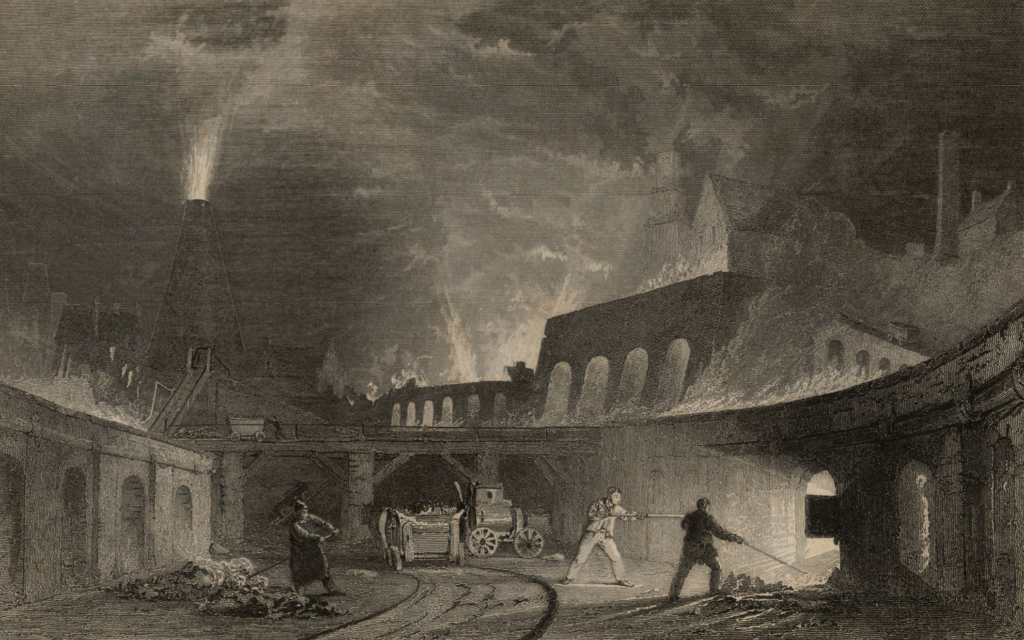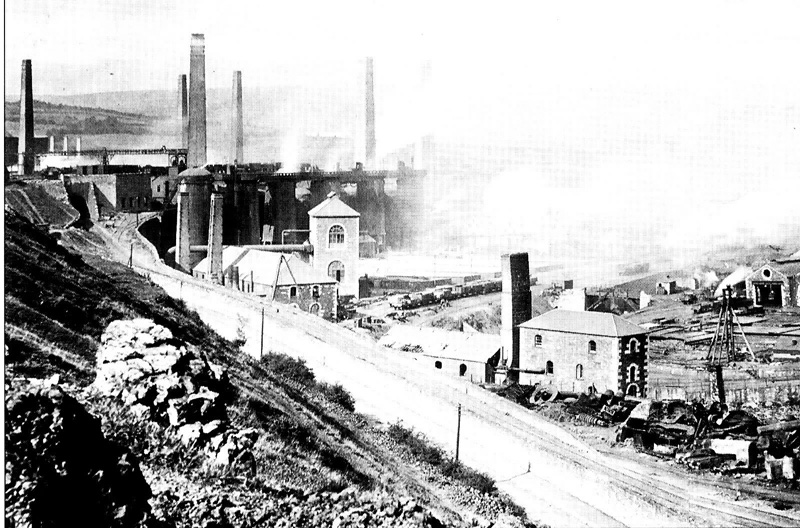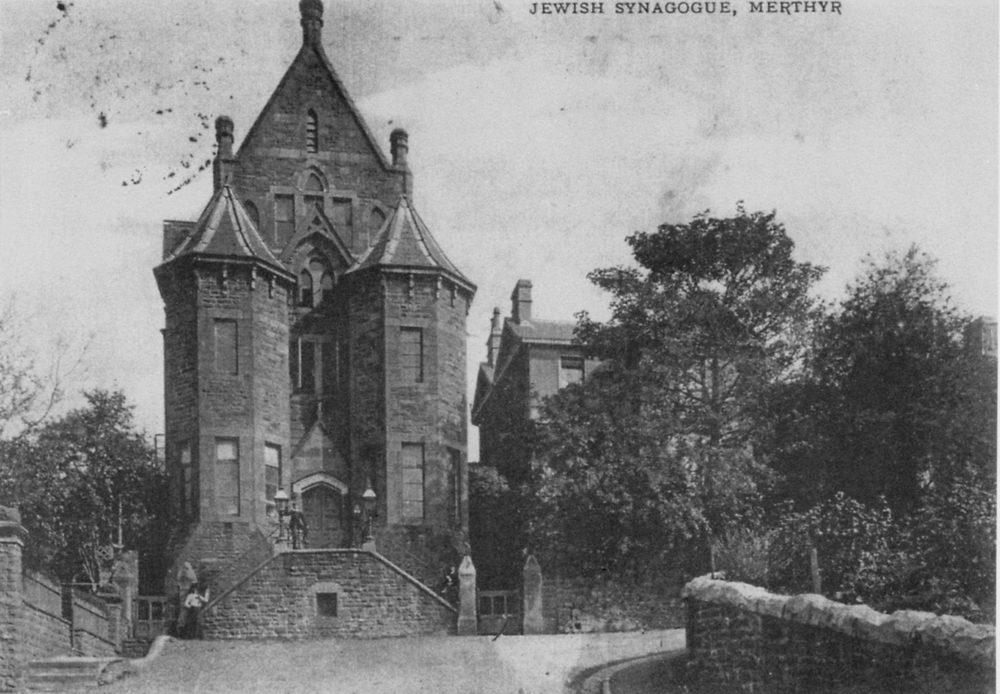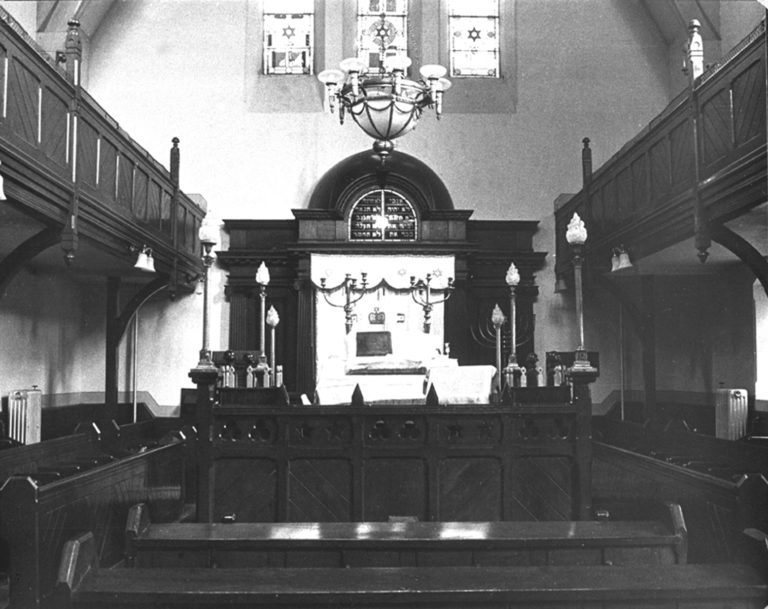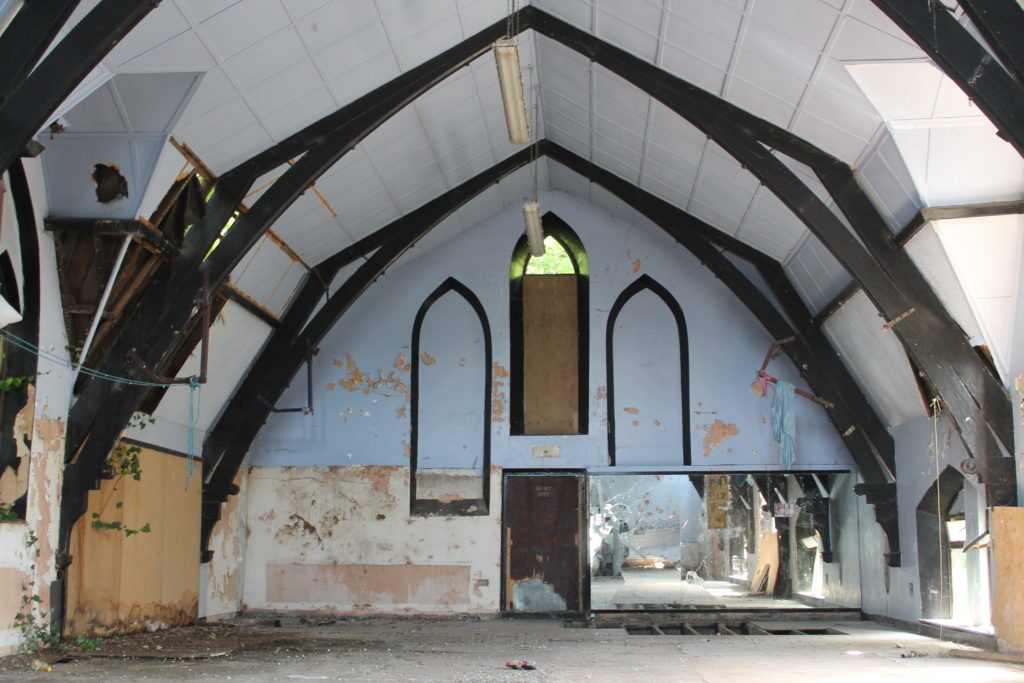
Merthyr Tydfil Synagogue – History
Source: Cai Parry-Jones, author of ‘The Jews of Wales: A History’ & Susan Fielding of the Royal Commission on the Ancient and Historical Monuments of Wales
Merthyr Tydfil synagogue was opened at the end of June 1877, the ceremony described as ‘one of the most interesting ceremonies ever witnessed here’ and the building ‘classed as one of the finest and boldest looking buildings in the town.
I
Merthyr Tydfil sits in the heart of the South Wales valleys, within the historic county of Glamorgan and the modern Merthyr Tydfil County Borough. The area has a long settlement history with a Roman fort established on a site now in the heart of the town. The area remained essentially rural into the mid eighteenth century, an open landscape of scattered farms with a small number of developing agricultural estates, with Merthyr forming a small village of c.500 people. This changed abruptly in the second half of the eighteenth century with the advent of the Industrial Revolution and the recognition of the rich local geological resources of ironstone, coal and limestone. With an abundance of easily accessible raw materials for iron production, together with plentiful waterpower, four major ironworks were founded within the space of 27 years that would go on to establish an industrial economy that would transform Merthyr into the largest town in Wales by 1851, and the iron and steel capital of the world.
A Jewish population is indicated in Merthyr by 1830, when a trade directory lists six clothes dealers bearing Jewish names. This presence is cemented by the building of the first synagogue in 1848. A population of c.40 Jews was served by this synagogue, among whom were those whose birth places were recorded as Austria, Poland and Russia.
II
The industrial boom in Merthyr created a strong pull factor, with Jewish merchants well placed to serve a relatively well-paid workforce in a new town which lacked the usual markets and shops. Such merchants and their willingness to sell on credit made the purchase of more expensive items such as clothes, furniture and jewelry more accessible to the inhabitants of Merthyr. These first-generation Jewish settlers, often starting as peddlers before establishing fixed shops, appear in a relatively narrow range of trades; clothiers, glaziers, furniture dealers, picture frame makers, jewelry sellers, watch repairers, and boot makers. Pawn brokering was also an important activity where the wages of industrial workers fluctuated frequently. Because Jews mainly did not work in industry, it meant they did not to compete for such jobs which seems to have aided their acceptance. They served a distinct role in the local economy.
The first synagogue was established on Victoria Street, about which little is known but it must have proved unsatisfactory as a second purpose-built building on John Street was opened in 1853. A report of the opening stated, ‘at the back of the Temperance Hall the lost sheep of the House of Israel have recently opened a pretty little synagogue … The Rev. Mr. Green of London, … enforced moral duties on the audience in very eloquent language. We observed about 60 or 70 Jews present, and several of the respectable inhabitants of the town who had been invited to attend.’
In 1859 the community took advantage of the creation of a new non-denominational cemetery by the Board of Health at Cefn Coed to establish a dedicated section for Jewish burial, later adding a small brick ohel.
In December 1866 it was reported that a school offering instruction in Hebrew had opened in Merthyr. Outside of London, it was rare to have a Jewish day school, so this was an indication of the strength of the congregation by this date. Established by Henry Barnett, the school had 20 boys and three girls, including some of Christian parentage, and was praised for its excellence of education.
III
By 1870 the John Street synagogue was too small for the congregation and an appeal was issued to fund a new building. In 1874, the appeal was published monthly, alongside a list of recent Jewish and non-Jewish contributors, stating that there were 60 Jewish families living in Merthyr, including 70 children, in need of a new synagogue and school accommodation. The estimated cost of the synagogue to provide seating for 200 and a number of ‘free seats’ was £1,800. The tender for the building of a synagogue, school and minister’s house was awarded to architect Charles Taylor and builder John Williams, both local to Merthyr.
On the 15th March 1876 the corner-stone was laid by the Rev. Green, the proposed building described as ‘when finished, will be of an imposing character… and will command a splendid view of the surrounding hills’. On the 1st April 1876 it was reported that Baron Rothschild had donated 200 guineas to the project, while another £400 was raised by the congregation. The outstanding £1,000 was taken out as a mortgage.
IV
The Synagogue was opened at the end of June 1877, the ceremony described as ‘one of the most interesting ceremonies … ever witnessed here’ and the building ‘classed as one of the finest and boldest looking buildings in the town’. The report goes on to describe the building:
‘The building is approached from two flights of steps rising from the entrance gates to the centre, or principal entrance, and is surmounted by a telling cast-iron railing and lamps. On entering the Synagogue, one is struck with the abundance of light provided, and the staircase, which is of pitch pine, is handsomely designed and substantially carried out. On this floor is a lofty and well-lighted School-room with class-room adjoining to accommodate sixty children; the former, although under the main building, is admirably lighted, cheerful in appearance, and the means for securing thorough ventilation well provided for … On ascending the principal staircase one cannot but admire the workmanship, the filling-in of the ballustres, which have a quatrefoil in the centre of each panel, and sinkings at each angle.
On arriving at the summit is the large entrance-hall, forming the main entrance to the Synagogue proper, and between the doors into it is a niche fitted with a wash-hand basin, and towel rollers on each side, for all good Jews wash before they enter their Synagogue. At the south side of the Hall is the ladies’ staircase to the gallery. The Synagogue is 50ft by 27ft inside dimensions, and has a gallery on three sides, and provides accommodation for 210 persons. The principal seats are divided, so that there can be no crowding, and under the book-boards are provided book boxes for the convenience of the occupants.
Internally, the building has an open timber roof, ceiled at the rafters, and the whole of the fittings are of pitch-pine varnished. The lighting is beautifully diffused, the building thoroughly ventilated, indeed the architect appears to have given this science especial study. On the Gallery level, there is a large platform-hall, ladies’ cloak and retiring-rooms. Every convenience appears to have been provided and well thought out, for we find on the basement floor a bath-room (the mikvah), a waiting room, a boiler-room, and a coal cellar. The building is in the Gothic style of architecture of an early date, and the visitor is struck with its substantial and pleasing appearance.’
On the 1st June 1878 the inauguration of the new Jewish Collegiate School within the building took place, the classroom designed to accommodate c.60 children.
The final cost was in the order of £2,300 and the outstanding debt took the congregation some years to pay off, with various events, including balls, held to raise money towards this and ongoing repairs.
V
The Jewish community, although small in number, made a significant contribution to Merthyr. In 1908, Alfred Isaac Freedman was noted as the third Jew ‘within about 10 years’ to be appointed Worshipful Master of the Loyal Cambrian Lodge of Freemasons (his obituary in 1917 including that he was ‘greatly mourned by the Christian populace… amongst whom he was known as ‘The People’s Friend’) while Julius Prag was appointed president of a number of Merthyr organisations including the Liberal Club and local Chamber of Trade. The Jewish community established a Literary Society in 1903 which, in addition to literature, offered lectures and debate on politics, religion and secular topics. The Merthyr Board of Guardians and the Ladies Benevolent Society raised funds for impoverished Jews in the UK and in Eastern Europe, but also aided with general community fundraising, in the 1890s holding annual services and fundraising events for the Merthyr General Hospital. The position held by the community was summed up in 1926 as they ’have been law-abiding citizens and give great assistance to charities and public causes. Their contribution to local life exceeds what one would expect from a small community’.
VI
In 1919, the Merthyr community numbered 400 Jews, reducing to 175 in 1937, and falling to just 20 by 1979. The severe downturn in the industrial economy, and subsequent rise in unemployment and general emigration, hit those working in the consumer sector hard with many relocating to Cardiff or other cities with a more prosperous outlook. Second or third generation Jews, well-educated and with a desire for professional and economic advancement, wanted better prospects than Merthyr was able to offer. The progression of Jewish pupils to higher and university education in Wales was above the national average for the UK and instances such as Derek Prag, a Merthyr born Cambridge graduate who made his life in London in charge of an international news agency, were not uncommon. This decline became self-perpetuating as others were required to leave in search of suitable marriage partners or to be part of larger, more sustainable Jewish communities elsewhere.
The Synagogue was no longer viable and it was sold off in 1983. The building was listed as Grade II* in 1978 but, after its sale and the removal of many sacred items, it was downgraded to Grade II. It was subsequently used as a Christian Centre and then a gym but, by 2004, it was no longer in use and the building remained unoccupied with its condition rapidly deteriorating to the extent that it become formally classified as being at risk. The Foundation for Jewish Heritage purchased the building in 2019 and has carried out urgent repairs.


